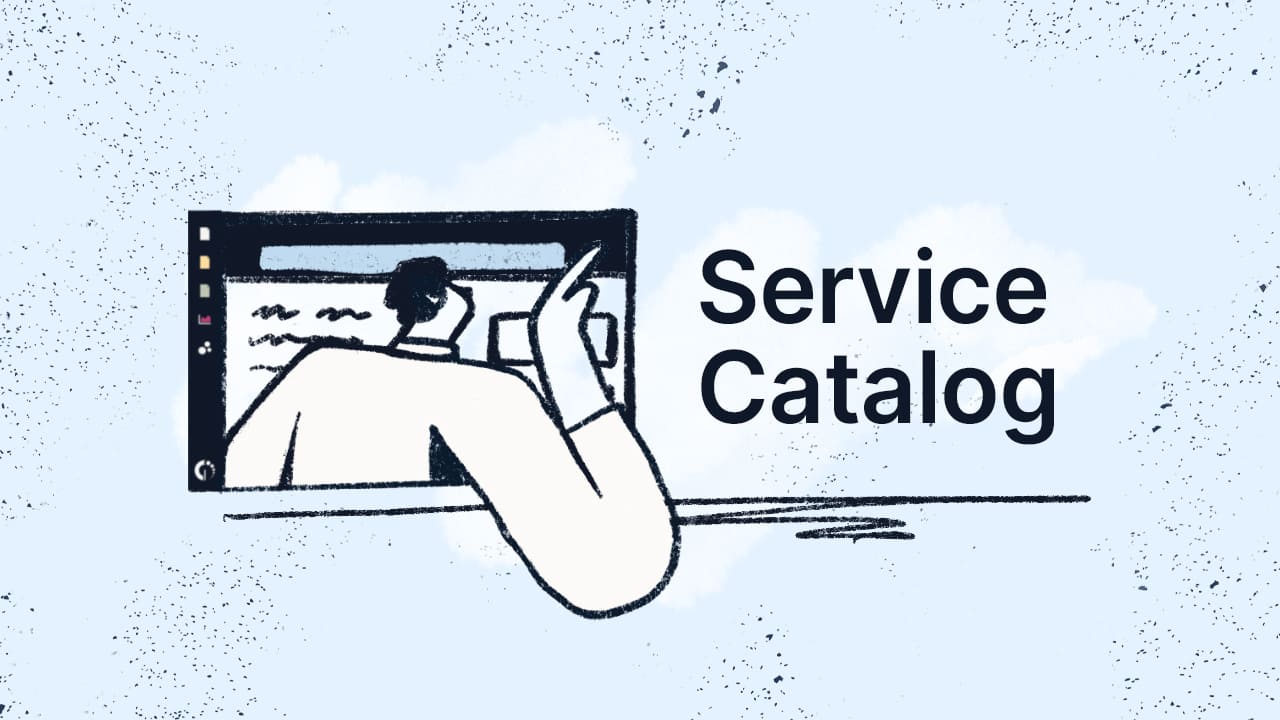Keeping hardware running smoothly can be a challenge for any business, but having the right hardware support system in place can make all the difference.
Of course, hardware, from computers and servers to networking devices, is at the core of your daily operations. And when things go wrong, addressing issues quickly and efficiently is your top priority to avoid costly downtime.
In this article, we’ll explore what hardware support involves, signs that it might be time to rethink your current approach, and some tips to improve your support process.
Along the way, we’ll also look at how tools like InvGate Asset Management and InvGate Service Management can help simplify hardware tracking and make handling support requests easier.
Let's get started by covering the basics: what hardware support really means and why it’s worth your attention.

What is hardware support?
Hardware support refers to the assistance provided to maintain, repair, and replace physical IT assets like computers, servers, network devices, and other equipment.
As we mentioned, businesses rely on hardware for daily operations, and having a system in place to manage issues, repairs, and replacements is crucial to avoid downtime and productivity loss. This support can come in the form of in-house IT support staff, external vendors, or a hybrid approach.
Effective hardware support isn't just about fixing problems after they arise. It's also about proactive monitoring and maintenance to catch issues before they disrupt business. For instance, regularly checking warranties, inventory statuses, and the overall health of your equipment ensures you're prepared for any eventual hardware failures.
Let's dive deeper into why hardware support matters and how you can optimize it for your business.

Signs you need better hardware support
It’s not always obvious when your business is struggling with hardware support. Often, teams adapt to slow response times or recurring equipment failures without realizing that a better system could save time and money.
Here are some clear indicators that your hardware support may need improvement:
1. Frequent equipment breakdowns
If employees are constantly dealing with malfunctioning equipment, this is a sign that your support system isn't keeping up. Broken hardware disrupts work and increases frustration, potentially affecting overall performance.
2. Rising maintenance costs
Unexpected hardware repairs can become a significant expense over time. If your maintenance costs are climbing, it's time to reconsider your hardware support strategy. Are you replacing equipment too soon? Or is it taking too long to identify the root cause of recurring issues?

3. Long resolution times
If it takes days — or even weeks — to resolve hardware issues, your support process might be inefficient. Slow response times lead to more downtime, affecting overall productivity. A quicker, streamlined process ensures that hardware issues don’t bottleneck your operations.
4. Outdated equipment tracking
Without a proper system to manage your IT assets, you might lose track of warranties, end-of-life dates, or even the devices themselves. Outdated spreadsheets or manual tracking processes lead to missed opportunities for timely replacements or repairs.
5. Inconsistent service provider responses
Outsourced hardware support can sometimes lead to inconsistent results. One day, a repair is handled quickly, and the next, a similar issue takes much longer to resolve. This inconsistency is often a result of miscommunication or lack of clear processes with external providers.
Tips to implement efficient hardware support
Once you've identified the need for better hardware support, the next step is implementing changes that will make your process more efficient. These tips can help streamline your hardware support workflow, reduce downtime, and extend the life of your IT assets.
1. Centralize your support requests
Create a clear channel for your team to submit hardware-related issues. When all requests are funneled through one place, it’s easier to track progress, prioritize, and avoid letting issues slip through the cracks.
For example, with InvGate Service Management, you can create a service catalog category specifically for hardware support. Any requests for equipment repairs or replacements can automatically be routed to the relevant IT team or external vendor. You can also set response time expectations and track whether they're being met.

2. Track inventory and warranties
Keeping track of all the hardware in your organization, along with their warranties and maintenance records, can be a challenge. Using an IT Asset Management tool like InvGate Asset Management makes this much easier. It automatically tracks every device, its lifecycle, and its warranty status, so you know when it’s time to replace outdated equipment or submit a warranty claim.
Let’s say you have several laptops that are all experiencing battery failures. InvGate Asset Management helps you check if they're still under warranty so you can quickly address the issue without incurring unnecessary costs. It also helps you anticipate hardware needs and budget accordingly.

3. Implement proactive maintenance
Regular hardware audits can identify issues before they become critical. By scheduling periodic checks on equipment performance, you can ensure that everything is running smoothly and plan replacements before devices fail unexpectedly.
With InvGate Asset Management, you can regularly monitor that every piece of equipment is accounted for and in optimal condition. Preventive maintenance helps catch failing hardware early, reducing the risk of sudden breakdowns that disrupt work.
4. Improve root cause analysis
If you notice recurring hardware problems, it’s important to investigate the root cause. Rather than repeatedly repairing devices, identify if there’s a deeper issue causing frequent failures. This could be related to specific hardware models, improper installation, or environmental factors (like excessive heat or dust).
Using the root cause analysis feature in InvGate Service Management, your team can quickly assess whether a particular device model is more prone to failure. If multiple requests come in for the same issue, you can identify patterns, trace the origin of the problem, and resolve it at the source.

5. Prioritize hardware replacement cycles
Set up a replacement schedule based on your hardware's lifecycle. This ensures that outdated devices are replaced before they cause major problems.
You can also align replacements with device warranties, so you can also take advantage of vendor support before purchasing new equipment.

Benefits of having robust hardware support
An efficient hardware support strategy brings multiple benefits, from reduced downtime to better cost management. Let’s explore some of the main advantages businesses experience when they optimize their hardware support processes:
1. Minimized downtime
Having an organized system for handling hardware issues ensures that any problems are dealt with quickly. This reduces the amount of time employees spend waiting for repairs or replacements, keeping productivity high.
2. Better asset utilization
When you know the exact status of your IT hardware, you can make more informed decisions about repairs, replacements, and upgrades. This prevents unnecessary purchases and ensures that you’re getting the most value out of each asset.
3. Improved cost management
Tracking warranties and equipment lifecycles helps you avoid unexpected repair costs. Instead of constantly dealing with sudden expenses, you can plan and budget for replacements well in advance.
4. Enhanced security
Old or malfunctioning hardware often poses security risks. Unsupported devices may not receive critical updates, leaving your network vulnerable. Regularly maintaining and replacing hardware keeps your security protocols up to date.
5. Simplified decision-making
With a detailed view of all your assets, including warranties and performance history, your team can make informed decisions about future purchases. Whether it’s deciding when to replace aging equipment or renegotiating with vendors, you have the data you need to choose the best path forward.

Why choose InvGate for hardware support?
Managing hardware support can be a time-consuming task, but with the right tools, it becomes much more manageable. InvGate Asset Management and InvGate Service Management offer solutions tailored to help businesses streamline their hardware support.
With InvGate Asset Management, you'll have complete visibility into your IT assets, including real-time data on inventory, performance, and warranties. This means no more outdated spreadsheets or missed warranty claims. Plus, your team can take proactive steps to maintain equipment, reducing the need for urgent repairs and unexpected downtime.
On the other hand, InvGate Service Management simplifies the process of handling hardware requests. Employees can easily submit requests by creating a dedicated service catalog for hardware support, and the system automatically assigns them to the appropriate technician. The platform also supports root cause analysis, helping your team address recurring problems more efficiently.
Together, these tools give you everything you need to manage your IT hardware support effectively, ensuring that issues are handled quickly and proactively.
Conclusion
Effective hardware support is essential for maintaining smooth business operations. Identifying signs of inadequate support, implementing proactive strategies, and using tools like InvGate Asset Management and InvGate Service Management can significantly improve your hardware management processes.
For businesses looking to stay ahead of hardware issues, investing in the right tools and processes can make all the difference.
If you want to see all these features in action, ask for a 30-day free trial and see what InvGate Service Management and InvGate Asset Management can do for you!















